|
|
Comments: This is the first of two uses of Obverse 3 (the second use is a re-marriage of these same dies) and the fourth of ten uses of Reverse A (including 2 re-marriages). |
Obverse 3 The photo below shows the Obverse 3 attribution grid. 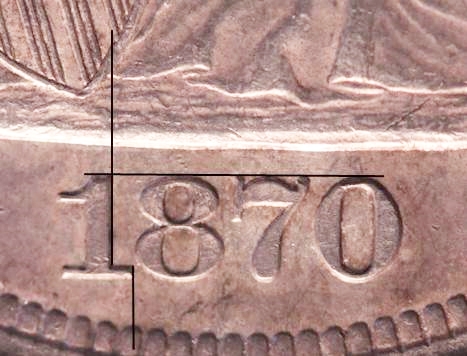 1870 Obverse 3 attribution grid Obverse 3 can also be easily identified by a small lump in Miss Liberty’s lap, visible on even low grade examples. Light die lines in the same area are much less notable, but can be seen on high-grade examples. PLEASE NOTE THAT IN DIE STATE B THIS LUMP IS GONE, OBLITERATED BY A LARGER IRREGULAR LUMP BELOW IT. The small lump and die lines are shown in the photo below. The large lump is shown in the following photo. 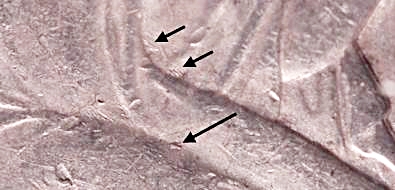 1870 Obverse 3 - Die state a Small die lump in lap 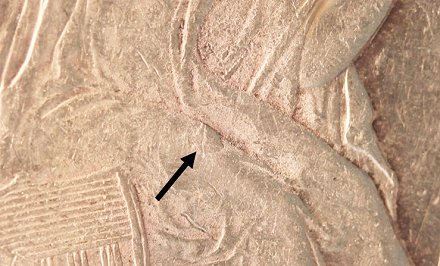 1870 Obverse 3 - Die state b Large die lump in lap
Our example of OC-3a exhibits die rotation of about 8 degrees counterclockwise. We believe that this rotation occurred when the dies were reused to create the re-marriage. Examples of OC-3 normally exhibit virtually no die rotation. This die marriage is often found with a very weak strike, particularly on the obverse stars. Examples of OC-3a exhibit a stronger obverse strike. |
Reverse A displays a very strong die line, joining the lower two leaves. Also note the die rust around the end of the lower leaf. 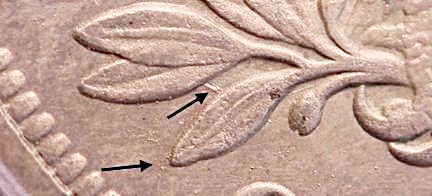 1870 Reverse A die line The Reverse A die is strongly doubled. This will be notable on high grades, but may not be detectable on grades below VF/XF. 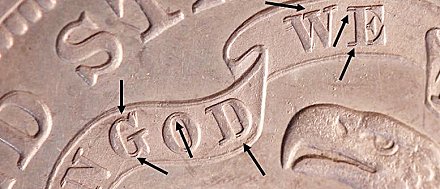 1870 Reverse A die doubling
|
| Photo credits:
Obverse 3 date and state a: 1870 NGC AU58, from the Osburn-Cushing reference collection. Obverse 3 state b: 1870 PCGS #81183554 AU50, from the Osburn-Cushing reference collection. Reverse A: 1870 PCGS PR61 (mis-attributed as a proof by PCGS), from the Osburn-Cushing reference collection. |
